5th SEPTEMBER 2015 GOPAL KALA RECIPE - GOKULASHTAMI - PRAISE AND CELEBRATIONS FOR LORD SRI KRISHNA`s BIRTH ( RAAS LEELA )
www.hemaspiritualpoetry.wordpress.com/2013/10/20
Janmashtami Puja
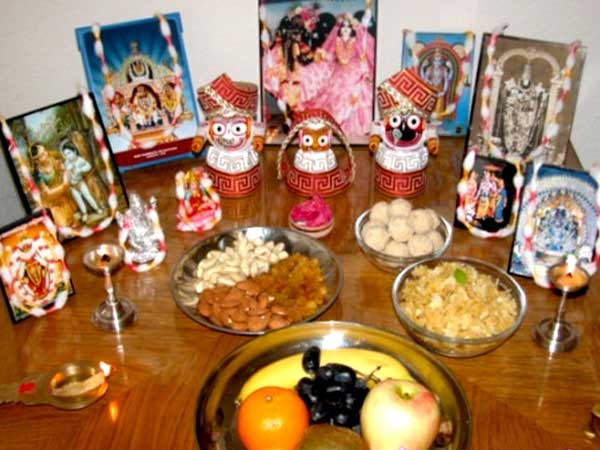 |
Janmashtami is celebrated across different parts of India and the world, with fun and fervor. The festival honors the birth of Lord Krishna, who was born on the eighth day of Sravana month, which corresponds to August-September as per the Gregorian calendar. Lord Krishna, an avatar of Lord Vishnu, was born in the Dwaparyug with an aim to kill the demon King Kansa and restore harmony and peace in the world. The deity is one of the favorites of Hindus. Lord Krishna is personified as a friend, a guide, a lover or as a child, by his devotee. Janmashtami is an important day for the devotees of Lord Krishna, as the festival celebrates his birth.
The merrymaking is marked by colorful cultural programs and puja. Special pujas are conducted in many Lord Krishna temples of India, as well as homes, as a part of the celebrations. The pooja is done to invoke Lord Krishna and seek his blessings, on the wonderful festival of Janmashtami. While the main puja, including aarti, is conducted in the midnight of the festival, people also organize puja during the daytime, wherein mantras of Lord Krishna are chanted, bhajans and songs are sung. In the following lines, we have given information on the pooja of Krishna Janmashtami.
Janmashtami Pooja
Puja Items
Janmashtami puja is done using the items that are required especially for the festival. It is believed that each puja item has a significance. This is primarily because of the fact that in order to worship the deity in a traditional way, all the puja items are required. Therefore, nothing should be missed out from the list of puja items for Janmashtami. Some of the very important puja items for Krishna Janmashtami include a puja thali, bell, diya (earthen lamp), rice, cardamom, betel nuts (pan supari), beetle leaves, roli, small container (lota) filled with Gangajal, honey, vermilion (sindoor), incense sticks, flowers and clarified butter (ghee). Apart from this, one also requires new clothes and jewelry for the deity as well as a small cradle. The items needed to make the Panchamrit include Gangajal, honey, ghee, milk and yogurt.
Process
Special puja is conducted at Lord Krishna temples on Janmashtami. The puja for the festival usually begins early in the morning, when a sacred bath is given to the idol of baby Krishna, using the holy water of Hindus - Ganga jal (water collected from River Ganga). After bathing, the idol is adorned with new clothes (that are decked with precious stone) that are made especially for embellishing it on the auspicious occasion. Yellow, orange and red may be the color of the clothes. Thereafter, the idol is clad with jewelry. The holy place is illuminated with diyas, while the devotees chant mantras and sing bhajans, praising Lord Krishna. Next, the idol is swung in a cradle, during which conches are blown. When the entire pooja is over, the devotees break their fast by having 'panchamrit'. Thereafter, the prasad is distributed among the devotees.
The merrymaking is marked by colorful cultural programs and puja. Special pujas are conducted in many Lord Krishna temples of India, as well as homes, as a part of the celebrations. The pooja is done to invoke Lord Krishna and seek his blessings, on the wonderful festival of Janmashtami. While the main puja, including aarti, is conducted in the midnight of the festival, people also organize puja during the daytime, wherein mantras of Lord Krishna are chanted, bhajans and songs are sung. In the following lines, we have given information on the pooja of Krishna Janmashtami.
Janmashtami Pooja
Puja Items
Janmashtami puja is done using the items that are required especially for the festival. It is believed that each puja item has a significance. This is primarily because of the fact that in order to worship the deity in a traditional way, all the puja items are required. Therefore, nothing should be missed out from the list of puja items for Janmashtami. Some of the very important puja items for Krishna Janmashtami include a puja thali, bell, diya (earthen lamp), rice, cardamom, betel nuts (pan supari), beetle leaves, roli, small container (lota) filled with Gangajal, honey, vermilion (sindoor), incense sticks, flowers and clarified butter (ghee). Apart from this, one also requires new clothes and jewelry for the deity as well as a small cradle. The items needed to make the Panchamrit include Gangajal, honey, ghee, milk and yogurt.
Process
Special puja is conducted at Lord Krishna temples on Janmashtami. The puja for the festival usually begins early in the morning, when a sacred bath is given to the idol of baby Krishna, using the holy water of Hindus - Ganga jal (water collected from River Ganga). After bathing, the idol is adorned with new clothes (that are decked with precious stone) that are made especially for embellishing it on the auspicious occasion. Yellow, orange and red may be the color of the clothes. Thereafter, the idol is clad with jewelry. The holy place is illuminated with diyas, while the devotees chant mantras and sing bhajans, praising Lord Krishna. Next, the idol is swung in a cradle, during which conches are blown. When the entire pooja is over, the devotees break their fast by having 'panchamrit'. Thereafter, the prasad is distributed among the devotees.
Gopalkala
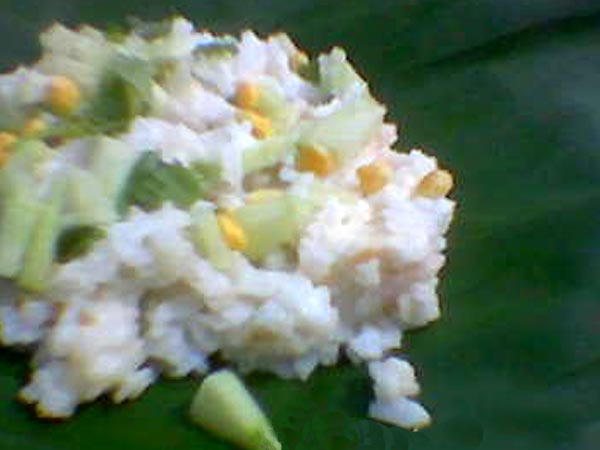 |
On the occasion of Janmashtami (the birthday of Lord Krishna), the devotees of Krishna prepare every favorite dish of the Lord. Then on the midnight of Janmashtami, these scrumptious dishes are offered to Lord Krishna in order to welcome him on the earth. These include varieties of sweets and dairy products. One of them is the luscious Gopalkala. Prepared from beaten rice, cur, ghee and cucumber, this salty recipe is generally prepared in every home where the festival of Janmashtami is observed. It is extremely easy to prepare and hardly take few minutes to be ready to serve. If you also want know how to make this extremely nutritious and scrumptious dish, the recipe is given below.
Gopalkala Recipe
Ingredients
Gopalkala Recipe
Ingredients
- 250 grams Beaten Rice
- 1 Coconut (fresh)
- 100 gm Cucumber
- 2 Green Chilies
- 1 tbsp Ghee
- 1 tsp Jeera
- 1/2 inch Ginger
- 50 grams Curd
- 1/2 tsp Sugar
- Salt to taste
Method
- Soak beaten rice for 10 minutes.
- Grate the coconut, roughly chop the cucumber & finely chop the green chilies and ginger.
- Melt ghee in a small pan for the tempering; add the jeera, green chilies and ginger.
- Pour over the beaten rice and add in the remaining ingredients. Mix well.
Krishna Rasa Leela
image: http://festivals.iloveindia.com/janmashtmi/pics/krishna-rasa-leela.jpg
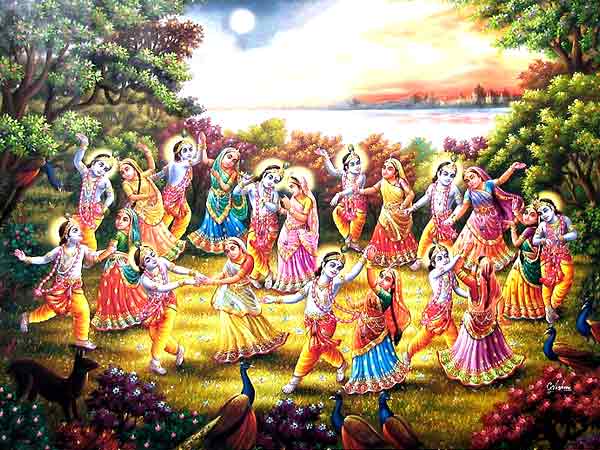 |
Lord Krishna is one of the favorite deities of Hindus. He is worshipped for his immense power, captivating appearance, unique charm and playfulness. For some, he is the hero, a lover or the guide; while for others, he is a child. He resides in the heart of every devotee and fulfills everyone's wish, if he is worshipped with in-depth devotion. Janmashtami is celebrated as the birthday of Lord Krishna. It falls on the eighth day of Sravana month (August-September according to the Gregorian calendar).
The celebrations of Janmashtami are marked by cultural programs, chanting of bhajans and special pujas. Dance drama is performed by professional artists, or chosen kids, wherein the formative years of Lord Krishna's life are depicted. The dance, which is known as Shri Krishna Rasa leela, is one of the significant parts of the celebrations, as the decisive part of life was spent by Lord Krishna, amidst the Gopis in Vrindavan. Read on to know more about Krishna Rasa Leela.
Shri Krishna Raslila
Legend
Raslila is a significant phase in the life of Lord Krishna, when he grew up from a child to a young teen. Before setting his trail to Mathura, in order to accomplish the task of his life (to kill his uncle, Kansa), he grew up by playing around with Gopis on the banks of River Yamuna, in Vrindavan. He was immensely loved by the Gopis due to his adorable mischief. The divine love for Lord Krishna was so strong that the Gopis forgot about the rest of the world, when they were playing and dancing with him. The Gopis performed constant smaran (remembrance) of Lord Krishna and were beloved by himself.
Performance
The Gopis would dance around with Lord Krishna and often play hide and seek. They would also sing songs in the glory of the deity. They considered themselves superior of other women, because they were privileged with the opportunity to dance with Lord Krishna. To teach the lesson of humility, Shri Krishna would hide himself during Raslila and would reappear only if Gopis plead to come back. While most of the time Shri Krishna stood at the center of all the Gopis, he would at times join hands with them and perform mesmerizing dance. All these delightful actions were often witnessed by the demigods like Gandharva, Yakshas and they would throw flowers from the sky, to shower blessings on the Gopis and the divine Shri Krishna.
Rasa Leela On Janmashtami
On the auspicious occasion of Janmashtami, the devotees of Lord Krishna would enjoy the scenes of Rasa leela performed by professional artists. Generally, Brahmin boys aged between 10 and 13 years are selected to enact as Lord Krishna in Raslila. The main theme of the dance drama revolves around the formative years of Lord Krishna. Apart from Raslila, other themes are also chosen for the performance. These may include Janamleela (the birth of Lord Krishna), Shanklarleela, Putanaleela (the assassination of the demon Putana) and Nagleela (the killing of serpent Kaliya). The troupes perform the dance drama with utmost devotion. In fact, Shri Krishna Rasa leela is one of the main forms of entertainment on Janmashtami.
The celebrations of Janmashtami are marked by cultural programs, chanting of bhajans and special pujas. Dance drama is performed by professional artists, or chosen kids, wherein the formative years of Lord Krishna's life are depicted. The dance, which is known as Shri Krishna Rasa leela, is one of the significant parts of the celebrations, as the decisive part of life was spent by Lord Krishna, amidst the Gopis in Vrindavan. Read on to know more about Krishna Rasa Leela.
Shri Krishna Raslila
Legend
Raslila is a significant phase in the life of Lord Krishna, when he grew up from a child to a young teen. Before setting his trail to Mathura, in order to accomplish the task of his life (to kill his uncle, Kansa), he grew up by playing around with Gopis on the banks of River Yamuna, in Vrindavan. He was immensely loved by the Gopis due to his adorable mischief. The divine love for Lord Krishna was so strong that the Gopis forgot about the rest of the world, when they were playing and dancing with him. The Gopis performed constant smaran (remembrance) of Lord Krishna and were beloved by himself.
Performance
The Gopis would dance around with Lord Krishna and often play hide and seek. They would also sing songs in the glory of the deity. They considered themselves superior of other women, because they were privileged with the opportunity to dance with Lord Krishna. To teach the lesson of humility, Shri Krishna would hide himself during Raslila and would reappear only if Gopis plead to come back. While most of the time Shri Krishna stood at the center of all the Gopis, he would at times join hands with them and perform mesmerizing dance. All these delightful actions were often witnessed by the demigods like Gandharva, Yakshas and they would throw flowers from the sky, to shower blessings on the Gopis and the divine Shri Krishna.
Rasa Leela On Janmashtami
On the auspicious occasion of Janmashtami, the devotees of Lord Krishna would enjoy the scenes of Rasa leela performed by professional artists. Generally, Brahmin boys aged between 10 and 13 years are selected to enact as Lord Krishna in Raslila. The main theme of the dance drama revolves around the formative years of Lord Krishna. Apart from Raslila, other themes are also chosen for the performance. These may include Janamleela (the birth of Lord Krishna), Shanklarleela, Putanaleela (the assassination of the demon Putana) and Nagleela (the killing of serpent Kaliya). The troupes perform the dance drama with utmost devotion. In fact, Shri Krishna Rasa leela is one of the main forms of entertainment on Janmashtami.
Rasa lila
From Wikipedia, the free encyclopedia
For the 1975 film, see Raasaleela. For the 2012 film, see Rasaleela (2012 film).
|
The Rasa lila (IAST rāsa-līlā) (Hindi: रास लीला) or Rasa dance is part of the traditional story of Krishna described in Hindu scriptures such as the Bhagavata Purana and literature such as the Gita Govinda, where he dances with Radha and her sakhis. The Indian classical dance of Kathak evolved from the 'Raslila of Braj and Manipuri Classical Dance' (Vrindavan) also known as Natwari Nritya, which was revived in 1960s by Kathak dancer, Uma Sharma.[1]
The term, rasa meaning "aesthetics" and lila meaning "act," "play" or "dance" is a concept from Hinduism, which roughly translates to "play (lila) of aesthetics (rasa)," or more broadly as "Dance of Divine Love".[2]
The rasa lila takes place one night when the gopis of Vrindavan, upon hearing the sound of Krishna's flute, sneak away from their households and families to the forest to dance with Krishna throughout the night, which Krishna supernaturally stretches to the length of one Night of Brahma, a Hindu unit of time lasting approximately 4.32 billion years. In the Krishna Bhakti traditions, the rasa-lila is considered to be one of the highest and most esoteric of Krishna's pastimes. In these traditions, romantic love between human beings in the material world is seen as merely a diminished, illusionary reflection of the soul’s original, ecstatic spiritual love for Krishna, God, in the spiritual world.
In the Bhagavata Purana it is stated that whoever faithfully hears or describes the Rasa lila attains Krishna's pure loving devotion (Suddha-bhakti).[3]
Just as a child plays at its own will with its reflection in a mirror, even so with the help of His Yogamāyā Bhagavān Śrī Kṛṣṇa sported with the Gopīs, who were like many shadows of His own form.[4]
Etymology[edit]
Apart from the definition above, the term also comes from the Sanskrit words rasa and lila, with rasa meaning “juice”, “nectar”, "emotion" or "sweet taste" and lila meaning "act".By taking this etymologic breakdown of the word literally, "Rasa lila" means the “sweet act” (of Krishna). It is often freely rendered as "the dance of love".
Performance[edit]
Rasa lila has been a popular theme in Bharatanatyam, Odissi, Manipuri and Kuchipudi items. Ras lila is a popular form of folk theatre in the regions of Mathura, Vrindavan in Uttar Pradesh, especially during the festivals of Krishna Janmashtami and Holi, and amongst various followers of Gaudiya Vaishnavism in the region. Raas leela(Raax lila) is also observed as one of the National Festivals of Assam. During Raax lila, several thousand devotees visit the holy temples and Xatras of Assam every year.
In the tradition of Vaishnavism of Manipur Rasa Lila is depicted within classic Manipuri dance, and revolves around the same story of the love between Krishna and the cowherd girls and tells the divine love story of Krishna, svayam bhagavan and Radha, his divine beloved. This form of dance was started by Bhagya Chandra in 1779 and in some parts of India is still performed every year on Krishna Janmashtami (the festival to clebrate Krishna's birthday). According to different traditions, the rasa-lila is performed either by boys and girls, or by girls only. The dance is performed holding dandi (sticks) and is often accompanied with folk songs and devotional music.
The Traditional Rasa Lila performances in Vrindavan are famous throughout the Vaisnava world as an experience of the spiritual world. Rasa Lila performance was started by Swami Sri Uddhavaghamanda Devacharya in the early 15th Century CE at Vamshivata in Vrindavan, Mathura. He was a prominent saint of the Nimbarka Sampradaya, and disciple of the world-renowned Swami Sri Harivyasa Devacarya. The Vani literature of Vraja is the transcription of the songs that were heard by Swami Harivyasa Devacarya and his Guru, Swami Shri Shribhatta as they meditated on the Nitya Lila of Shri Radha Krishna. These songs describe the eternal spiritual abode of Shri Radha Krishna, the Sakhis and Nitya Vrindavana Dham - or Nikunja Dham.
As many new devotees of that time could not understand the Vraja language, Swami Uddavaghamanda Devacarya trained his Brahmachari students to play the parts that appeared in the songs in order to get a visual representation of the Lila that was being described. Many were sceptical of this, and attempted to thwart the first enactment. However, at the conclusion of the first Rasa Lila, tradition has it, the Lord Himself appeared and gave the actors his own Crown, and decreed that whenever a qualified actor was to take the part of the Lord, from the moment he put on the crown on his head, it should be understood that he represents the Lila potency of God, and treated with due respect. Shri Radha and Krsna shall be known as Shri Radha Rasavihari.
Since then, the traditional form has remained that actors who are young Brahmacharis will join a group led by the Swami of that group. The music remains the typical Dhrupada style of the Vraja Acharyas who penned the songs they heard to the accompaniment of Sitar and Pakhawaj and the songs are sung in Vraja Language, a parent to modern Hindi.
Recently, many people have changed the traditional music to popular music. Yet there are a dedicated few who seek to preserve the traditional form of devotional art known as Rasa Lila.
Janmashtami Rangoli
image: http://festivals.iloveindia.com/janmashtmi/pics/janmashtami-rangoli.jpg
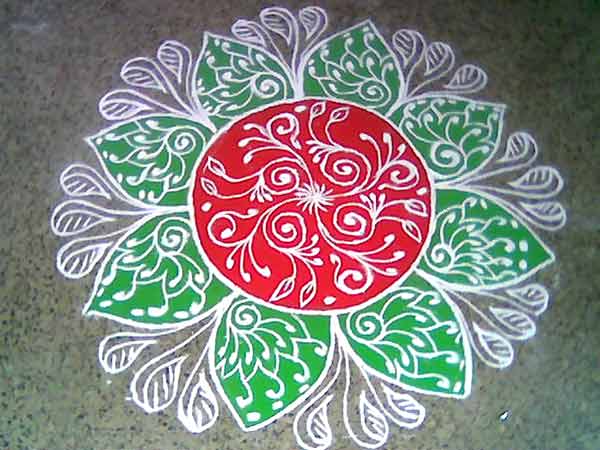 |
One of the most popular art forms in India, rangoli (kolam) is drawn at the entranceway in most of the Hindu festivals, because it is considered auspicious. On the ceremonious occasion of Janmashtami, people draw rangoli at their entranceway, to welcome Lord Krishna, as the festival commemorates his birth. The art form is a kind of decorative motif, which can be made by using finely ground white powder, colors or even flowers. On Janmashtami, people prefer adorning their verandah with alpana (another name of rangoli) with colors or chalk. In south India, kolam is usually drawn using rice flour. Go through following lines to know more about Krishna Janmashtami rangoli.
Rangoli Designs
The designs chosen for a traditional Rangoli are usually derived from nature, because the practice of making designs of the art form is ancient. Some of the most popular Rangoli motifs are peacocks, swans, mango, flowers, creepers, etc. Traditionally, the natural dyes derived form barks of trees and leaves were used for rangoli. However, in the modern age, people make use of synthetic colors for the rangoli. Today, colors, rice flour, turmeric powder and red vermilion are used to draw the rangoli motifs. Depending upon the preference, people choose to draw either huge motifs or simple designs, at their doorsteps.
How Is Rangoli Made
It is interesting to see people in south India to make use of rice flour to make simple as well as intricate kolams. On the wonderful occasion of Janmashtami, they would make sure that lord Krishna is welcomed at the best possible way. To serve the purpose, people clean their house, wash the entranceway and make kolam. Rice flour is used to make kolam. A particular design is considered in mind, before drawing the design. Then, the image is begun from a dot (the starting point). Usually, geometrical shapes such as oval, triangle, hexagon, pentagon etc are used to make kolam. With the increasing expertise, images of peacock and animals can be easily drawn.
Significance Of Rangoli
Rangoli or kolam forms a significant part of Janmashtami. This is because on the day, Lord Krishna is expected to visit the homes, which are kept neat and beautifully decorated. Since the devotees of lord Krishna expect his visit, they scrub-clean their house and premises, decorate the place with festoons and draw his footsteps, using rice flour, at the entranceway. The footsteps are considered complete, only when they are complemented by a beautiful kolam. This is the reason why on the occasion of Janmashtami, people draw kolam at their entranceway. Moreover, rangoli is considered auspicious for any Hindu festival. All the decorations are given a finishing touch by beautiful rangoli motifs.
Read more at http://festivals.iloveindia.com/janmashtmi/rangoli.html#cTfJiiji4MC4VM9D.99Rangoli Designs
The designs chosen for a traditional Rangoli are usually derived from nature, because the practice of making designs of the art form is ancient. Some of the most popular Rangoli motifs are peacocks, swans, mango, flowers, creepers, etc. Traditionally, the natural dyes derived form barks of trees and leaves were used for rangoli. However, in the modern age, people make use of synthetic colors for the rangoli. Today, colors, rice flour, turmeric powder and red vermilion are used to draw the rangoli motifs. Depending upon the preference, people choose to draw either huge motifs or simple designs, at their doorsteps.
How Is Rangoli Made
It is interesting to see people in south India to make use of rice flour to make simple as well as intricate kolams. On the wonderful occasion of Janmashtami, they would make sure that lord Krishna is welcomed at the best possible way. To serve the purpose, people clean their house, wash the entranceway and make kolam. Rice flour is used to make kolam. A particular design is considered in mind, before drawing the design. Then, the image is begun from a dot (the starting point). Usually, geometrical shapes such as oval, triangle, hexagon, pentagon etc are used to make kolam. With the increasing expertise, images of peacock and animals can be easily drawn.
Significance Of Rangoli
Rangoli or kolam forms a significant part of Janmashtami. This is because on the day, Lord Krishna is expected to visit the homes, which are kept neat and beautifully decorated. Since the devotees of lord Krishna expect his visit, they scrub-clean their house and premises, decorate the place with festoons and draw his footsteps, using rice flour, at the entranceway. The footsteps are considered complete, only when they are complemented by a beautiful kolam. This is the reason why on the occasion of Janmashtami, people draw kolam at their entranceway. Moreover, rangoli is considered auspicious for any Hindu festival. All the decorations are given a finishing touch by beautiful rangoli motifs.
The Dance Of Divine Love – The Raas Leela
The Dance Of Divine Love – The Raas Leela
Fluid notes of the flute pure,
Fluffy, fleecy clouds azure.
Fading colours, hues of twilight,
Falling streams, liquid moonlight.
Fluffy, fleecy clouds azure.
Fading colours, hues of twilight,
Falling streams, liquid moonlight.
The echoes of the flute-laden wind,
The shadowy darkness carried within.
Tinsel notes scattered and sprayed,
Music of the universe the flute played.
The shadowy darkness carried within.
Tinsel notes scattered and sprayed,
Music of the universe the flute played.
The ‘gopis’ worked hard, like beavers they toiled,
The butter they churned, the milk they boiled.
From the heart of the Brindavan forests deep,
The honeyed tones their beings did seep.
The butter they churned, the milk they boiled.
From the heart of the Brindavan forests deep,
The honeyed tones their beings did seep.
In a trance-like state, the gopis swayed,
It was Lord Krishna’s call from far away,
The gopis towards the forest made their way…
It was Lord Krishna’s call from far away,
The gopis towards the forest made their way…
Floating fragrance of the ‘kadamba’ tree,
The songs of the birds hushed, ceased.
Free flowing ripples, the Yamuna river,
Molten moon causing a quiver.
The songs of the birds hushed, ceased.
Free flowing ripples, the Yamuna river,
Molten moon causing a quiver.
Moving fingers the flute caressed,
Lilting melody when they came to rest.
The poignant notes rang out clear,
The gopis searching drew near.
Lilting melody when they came to rest.
The poignant notes rang out clear,
The gopis searching drew near.
Thirsty eyes drank in the scene,
The silhouette outlined by the moonbeam.
Magnetic eyes, mysterious gleam,
Shining body with a blue sheen.
The silhouette outlined by the moonbeam.
Magnetic eyes, mysterious gleam,
Shining body with a blue sheen.
The gopis Lord Krishna did surround,
Their bangles, their anklets made a tinkling sound.
Swirling skirts and dancing feet,
Whirlpool of colours, rhythmic beat.
Their bangles, their anklets made a tinkling sound.
Swirling skirts and dancing feet,
Whirlpool of colours, rhythmic beat.
Round and round the gopis spun,
Round the fulcrum, the axis, the central sun.
Lord Krishna magically transformed,
And danced with the gopis in multiple forms.
Round the fulcrum, the axis, the central sun.
Lord Krishna magically transformed,
And danced with the gopis in multiple forms.
The ‘Dance Of Divine Love’ the ‘Raas Leela’ was seen,
By heaven , by earth and the stars between.
Lord Shiva himself as ‘gopishvara’ witnessed the scene…
By heaven , by earth and the stars between.
Lord Shiva himself as ‘gopishvara’ witnessed the scene…
The gopis overcame one by one,
Their material wants till there was none.
The ego, the attachments which traversed deep,
No longer held on to make them weep.
Their material wants till there was none.
The ego, the attachments which traversed deep,
No longer held on to make them weep.
Layer by layer they cast off,
Familial,emotional and mental ties thereof.
Only love and devotion to the Lord remained,
With every breath, every beat, His thought they retained.
Familial,emotional and mental ties thereof.
Only love and devotion to the Lord remained,
With every breath, every beat, His thought they retained.
Raised fervour, rapid tempo,
Rising music, resounding crescendo!
With Lord Krishna the forms fused ,
Soon those very forms diffused…
Rising music, resounding crescendo!
With Lord Krishna the forms fused ,
Soon those very forms diffused…
No shape, no form, no gender,
Each identity in total surrender.
Individual souls with the universal soul,
The whole the part, the part the whole.
Just the one consciousness sole…
Each identity in total surrender.
Individual souls with the universal soul,
The whole the part, the part the whole.
Just the one consciousness sole…
Footnotes
————
————
Gopis – The ‘cow-herd’ girls
Kadamba – Evergreen tropical tree native to South and Southeast Asia.
Gopishvara – The female form taken by Lord Shiva to participate in the dance of Lord Krishna and the gopis.
Kadamba – Evergreen tropical tree native to South and Southeast Asia.
Gopishvara – The female form taken by Lord Shiva to participate in the dance of Lord Krishna and the gopis.
Krishna Janmashtami – The Birth Of Lord Krishna – The Birth Of Love
Devaki leaned against the wall, she let out a sigh,
Six children from her womb…killed…born only to die…
The seventh child had been spirited out at night,
A ‘still born’ he was declared to save him from his plight.
Six children from her womb…killed…born only to die…
The seventh child had been spirited out at night,
A ‘still born’ he was declared to save him from his plight.
The eighth child she now awaited with bated breath,
Hoping by some miracle, he would escape death.
Vasudeva, her husband , echoed her thoughts,
Some glimpse of light in the darkness he sought.
Hoping by some miracle, he would escape death.
Vasudeva, her husband , echoed her thoughts,
Some glimpse of light in the darkness he sought.
Kamsa, her cousin brother, lay awake in bed,
Fearful thoughts swam in his head.
“The eighth child will cause your doom,
When he comes forth from Devaki’s womb!”
He shuddered when he heard the voice,
He clamped his ears to shut out the noise.
Fearful thoughts swam in his head.
“The eighth child will cause your doom,
When he comes forth from Devaki’s womb!”
He shuddered when he heard the voice,
He clamped his ears to shut out the noise.
Each child of Devaki’s before it opened its eyes,
Mercilessly he had killed , left with no choice .
‘A mere baby…this eighth child…what can he do?
I must harden my heart or I will rue!’
Mercilessly he had killed , left with no choice .
‘A mere baby…this eighth child…what can he do?
I must harden my heart or I will rue!’
Devaki glowed with an inner light,
Divine, radiant, luminous, bright.
Darkness dispelled, a shower of gold and white,
The jail seemed lit by a thousand lights!
It was ‘Ashtami’, the eighth day of ‘Krishna Paksham’,
The moon slid into the ‘Rohini Nakshatram’.
Divine, radiant, luminous, bright.
Darkness dispelled, a shower of gold and white,
The jail seemed lit by a thousand lights!
It was ‘Ashtami’, the eighth day of ‘Krishna Paksham’,
The moon slid into the ‘Rohini Nakshatram’.
Lo and behold! Lord Krishna arrived in their midst,
With four hands closed into four tiny fists.
The lotus, the conch, he held in one pair,
The ‘chakra’, the mace, he waved in the air.
Gurgling sounds filled the cell,
Accompanied by the flute and the tinkling of bells.
With four hands closed into four tiny fists.
The lotus, the conch, he held in one pair,
The ‘chakra’, the mace, he waved in the air.
Gurgling sounds filled the cell,
Accompanied by the flute and the tinkling of bells.
A chant was heard from the heavens above,
Poured forth it did from the realms of love…
Poured forth it did from the realms of love…
“Vasudeva Sutam Devam,
Kamsa Chanura Mardanam,
Devaki Paramanandam,
Krishnam Vande Jagadgurum…”
Kamsa Chanura Mardanam,
Devaki Paramanandam,
Krishnam Vande Jagadgurum…”
“Son of the great Vasudeva,
The destroyer of evil Kamsa and Chanura,
He fills Devaki’s heart with bliss,
‘Guru’, ‘Master teacher’ of the universe he is…”
The destroyer of evil Kamsa and Chanura,
He fills Devaki’s heart with bliss,
‘Guru’, ‘Master teacher’ of the universe he is…”
“Take Lord Krishna to Gokul, to Nanda’s house,
Exchange him for the baby lying next to Yashoda, his spouse.
‘Maya’, the divine Goddess who is the new born,
Will deal with Kamsa at the break of dawn,” said a divine voice.
Exchange him for the baby lying next to Yashoda, his spouse.
‘Maya’, the divine Goddess who is the new born,
Will deal with Kamsa at the break of dawn,” said a divine voice.
Vasudeva got ready to do as he was bid,
Carefully in a basket, baby Krishna he hid.
Pain wrenched Devaki’s heart,
From Lord Krishna she knew she had to part.
Carefully in a basket, baby Krishna he hid.
Pain wrenched Devaki’s heart,
From Lord Krishna she knew she had to part.
The rain outside incessantly poured,
Flashes of lightning, thunder roared.
‘Sleep’, the guards subtly lured,
Heads nodded, they rhythmically snored.
Flashes of lightning, thunder roared.
‘Sleep’, the guards subtly lured,
Heads nodded, they rhythmically snored.
The gates of their own accord opened wide,
The moon served as Vasudeva’s guide.
River Yamuna gave way, rising in tide,
To a path, a soft river bed by parting to a side.
The moon served as Vasudeva’s guide.
River Yamuna gave way, rising in tide,
To a path, a soft river bed by parting to a side.
Adi Sesha, the snake, raised his hoods,
Protective, shielding as much as he could.
Lord Krishna surveyed with dancing eyes,
Casting a spell on all who spied.
Protective, shielding as much as he could.
Lord Krishna surveyed with dancing eyes,
Casting a spell on all who spied.
The torrents, the floods,the swell, the spate,
In unison, in harmony did gradually abate.
The trees, the flowers, the plants were rooted,
the birds tweeted not, nor the owls hooted.
In unison, in harmony did gradually abate.
The trees, the flowers, the plants were rooted,
the birds tweeted not, nor the owls hooted.
The dark moon, the stars gazed in awe,
Enchanted, mesmerised by Lord Krishna whom they saw.
Shared jubilation, shared elation,
In utter stillness, in silent communion…
Magical moment, timeless, suspended…
Pulsating joy towards the heavens ascended…
Enchanted, mesmerised by Lord Krishna whom they saw.
Shared jubilation, shared elation,
In utter stillness, in silent communion…
Magical moment, timeless, suspended…
Pulsating joy towards the heavens ascended…
The ‘Guru’, the ‘Saviour’ was here on earth,
To fill every heart with happiness, with mirth,
With boundless love of which there was a dearth…
Divine plan, divine ploy,
With the Lord’s birth, ecstatic joy…
To fill every heart with happiness, with mirth,
With boundless love of which there was a dearth…
Divine plan, divine ploy,
With the Lord’s birth, ecstatic joy…
Footnotes
———–
———–
Devaki – Name of Lord Krishna’s mother
Vasudeva – Name of Lord Krishna’s father
Kamsa – Name Of Lord Krishna’s uncle
Ashtami – Eighth day of the Hindu Lunar calendar
Krishnapaksham – Period of the fading or waxing moon
Rohini – Name of a star
Nakshatram – Star
The Chakra – the discus
Gokul – A town in Uttar pradesh in India where Lord Krishna spent his childhood days
Nanda – Name of Lord Krishna’s foster father
Yashoda – Name of Lord Krishna’s foster mother
Maya – Divine goddess Durga
Adi Sesha – King of snakes
guru – Teacher, Master
Vasudeva – Name of Lord Krishna’s father
Kamsa – Name Of Lord Krishna’s uncle
Ashtami – Eighth day of the Hindu Lunar calendar
Krishnapaksham – Period of the fading or waxing moon
Rohini – Name of a star
Nakshatram – Star
The Chakra – the discus
Gokul – A town in Uttar pradesh in India where Lord Krishna spent his childhood days
Nanda – Name of Lord Krishna’s foster father
Yashoda – Name of Lord Krishna’s foster mother
Maya – Divine goddess Durga
Adi Sesha – King of snakes
guru – Teacher, Master
Janmashtami Bhajans
The festival of Janmashtami is celebrated with great zeal by Hindus across India. The eighth day of Savana month is important in the Hindu calendar, because this is the day when Lord Krishna was born in Mathura. The little town of Mathura, situated along the banks of River Yamuna, has now turned into a place of worship. Lord Krishna temple in Mathura is renowned for its Janmashtami celebrations. However, all the temples of Shri Krishna are special on Janmashtami. At midnight stroke, the devotees of Shri Krishna sing devotional songs (bhajans) to praise the deity. It is customary to perform aarti in the midnight of ashtami, when Lord Krishna was born. In this article, we have given the lyrics of some of the popular bhajans that can be sung on Krishnashtami.
Krishna Janmashtami Bhajans
Darshan Do Ghanshyam
Darashan do ghanashyam naath mori
Ankhiyan pyaasi re
Man mandir ki jyoti jagaado,
Ghat ghat basi re
Mandir mandir murat teri
Phir bhi naa dikhe surat teri
Yug bite naa aai milan ki
Puranamasi re
Dwaar dayaa kaa jab tu khole
Pancham sur mein gungaa bole
Andhaa dekhe langadaa chal kar
Pahunche kasi re
Paani pi kar pyaas bujhaun
Nainon ko kaise samajhaaun
Aankh michauli chhodo ab
Man ke basi re
Nibarl ke bal dhaan nidharn ke
Tum rakhwaale bhakt janon ke
Tere bhajan mein sab sukh paun
Mite udasi re
Naam jape par tujhe naa jaane
Unako bhi tu apanaa maane
Teri dayaa kaa ant nahin hai
He dukh nashi re
Aaj phaisalaa tere dwaar par
Meri jit hai teri haar par
Har jit hai teri main to
Charan upaasi re
Dwaar khadaa kab se matavaalaa
Maange tum se har tumhaari
Narasi ki ye binati sunalo
Bhakt vilaasi re
Laj naa lut jaaye prabhu teri
Naath karo naa dayaa mein deri
Tin lok chhod kar aao
Gangaa nivasi re
Bhajo Radhe Govinda
Bhajo Radhe Govinda
Gopala Tera pyara naam hai
Gopala Tera pyara naam
Nandalala Tera pyara naam
Mor mukat maathe tilak
Gale vaijanthimala Gale
Koi kahe Vasudev ka
Koi kahe Nandalala Koi kahe
Bhajo Radhe Govinda.
Gaj aur Grehe lade jal
Jal mein chakra chalaya Jal mein chakra chalaya
Jab jab bhid padi bhagaton par
Nanggi pairin dhaya Nanggi pairin dhaya
Bhajo Radhe Govinda.
Bhajo Man Govind Gopala
Bhajo Man Govind Gopala
Govind Gopala Gopala
Bhajo man Govind Gopala
Govind bolo Hari Gopal bolo
Govind Gopala, Gopala
Bhajo man Govind Gopala
Rang Le Khudko, Murari Ke Rang
Rang le khudko, murari ke rang
Jeevan ke sab rang hain jhoote
Rang lo mohe
Apne rang mein murari.
Mrigtrishna ke is jaal se ab karo mukti humari,
Rang lo mohe
Apne rang mein murari.
Dukh-sukh, paap-punya hain aane jane.
Rang lo mohe
Apne rang mein murari
Mayajaal ke rang hai kacche, bas tohre naam ke pukke,
Rang lo mohe
Apne rang mein murari
Tohre naam se hoga is bhav sagar ka paar
Rang lo mohe
Apne rang main murari
Darsh Do Mohe Girdhari
Darsh do mohe girdhari
More pranpriye krishna
More pyare girdhari,
Darsh do mohe
More pran chhootat jat
Main neech nirbal prani
Chahta jana chhodd duniya ka sath
Darsh do mohe
More pran chhootat jat
Moh maya ke is bhanwar se
Do mujhe ab ubhar
Darsh do mohe
More pran chhootat jat
Karm ki gathariya ho gayi bhari
Karo mera uddhar
Darsh do mohe
More pran chhootat jat
Sumiran kar tera antim kshan mein
Mujhe milega swarg ka dwar
Darsh do mohe
More pran chhootat jat
More pyare girdhari
Sun lo ab arz humari
Darsh de mohe
More pran chhootat jat
Krishna Janmashtami Bhajans
Darshan Do Ghanshyam
Darashan do ghanashyam naath mori
Ankhiyan pyaasi re
Man mandir ki jyoti jagaado,
Ghat ghat basi re
Mandir mandir murat teri
Phir bhi naa dikhe surat teri
Yug bite naa aai milan ki
Puranamasi re
Dwaar dayaa kaa jab tu khole
Pancham sur mein gungaa bole
Andhaa dekhe langadaa chal kar
Pahunche kasi re
Paani pi kar pyaas bujhaun
Nainon ko kaise samajhaaun
Aankh michauli chhodo ab
Man ke basi re
Nibarl ke bal dhaan nidharn ke
Tum rakhwaale bhakt janon ke
Tere bhajan mein sab sukh paun
Mite udasi re
Naam jape par tujhe naa jaane
Unako bhi tu apanaa maane
Teri dayaa kaa ant nahin hai
He dukh nashi re
Aaj phaisalaa tere dwaar par
Meri jit hai teri haar par
Har jit hai teri main to
Charan upaasi re
Dwaar khadaa kab se matavaalaa
Maange tum se har tumhaari
Narasi ki ye binati sunalo
Bhakt vilaasi re
Laj naa lut jaaye prabhu teri
Naath karo naa dayaa mein deri
Tin lok chhod kar aao
Gangaa nivasi re
Bhajo Radhe Govinda
Bhajo Radhe Govinda
Gopala Tera pyara naam hai
Gopala Tera pyara naam
Nandalala Tera pyara naam
Mor mukat maathe tilak
Gale vaijanthimala Gale
Koi kahe Vasudev ka
Koi kahe Nandalala Koi kahe
Bhajo Radhe Govinda.
Gaj aur Grehe lade jal
Jal mein chakra chalaya Jal mein chakra chalaya
Jab jab bhid padi bhagaton par
Nanggi pairin dhaya Nanggi pairin dhaya
Bhajo Radhe Govinda.
Bhajo Man Govind Gopala
Bhajo Man Govind Gopala
Govind Gopala Gopala
Bhajo man Govind Gopala
Govind bolo Hari Gopal bolo
Govind Gopala, Gopala
Bhajo man Govind Gopala
Rang Le Khudko, Murari Ke Rang
Rang le khudko, murari ke rang
Jeevan ke sab rang hain jhoote
Rang lo mohe
Apne rang mein murari.
Mrigtrishna ke is jaal se ab karo mukti humari,
Rang lo mohe
Apne rang mein murari.
Dukh-sukh, paap-punya hain aane jane.
Rang lo mohe
Apne rang mein murari
Mayajaal ke rang hai kacche, bas tohre naam ke pukke,
Rang lo mohe
Apne rang mein murari
Tohre naam se hoga is bhav sagar ka paar
Rang lo mohe
Apne rang main murari
Darsh Do Mohe Girdhari
Darsh do mohe girdhari
More pranpriye krishna
More pyare girdhari,
Darsh do mohe
More pran chhootat jat
Main neech nirbal prani
Chahta jana chhodd duniya ka sath
Darsh do mohe
More pran chhootat jat
Moh maya ke is bhanwar se
Do mujhe ab ubhar
Darsh do mohe
More pran chhootat jat
Karm ki gathariya ho gayi bhari
Karo mera uddhar
Darsh do mohe
More pran chhootat jat
Sumiran kar tera antim kshan mein
Mujhe milega swarg ka dwar
Darsh do mohe
More pran chhootat jat
More pyare girdhari
Sun lo ab arz humari
Darsh de mohe
More pran chhootat jat
The Story Behind Diwali – The Festival Of Lights
Demon Narakasura was blessed at birth,
Came forth he did from the womb of Mother Earth.
Lord Vishnu as’ Varaha’, a boar and Bhooma Devi in communion,
Narakasura was born from this holy union.
No one could cause his death, his destruction,
Except if following Mother Earth’s instructions.
Mighty powers were bestowed upon him,
He could use them to satisfy every desire, every whim.
He asserted himself when the Devas he assaulted,
They fled in distress, humiliated, exhausted.
He surveyed’ Devaloka’ with pleasure,
His gaze fell on a priceless treasure!
On the ears of Mother Aditi, on her earrings,
Glowing, sparkling, glittering.
Like the king’s bejewelled crown,
Like a queen’s shimmering gown.
Aditi, the Mother of the Devas and the Sun,
Aditi whose earrings could be equalled by none!
Narakasura’s eyes gleamed with greed,
To his better counsel, he paid no heed.
He snatched the jewel from Mother Aditi’s ears,
Callously ignoring her pain, her tears…
With women Narakasura could not be trusted,
He leered, he lured, after them he lusted.
Thousands of women from all over the world,
He captured and into a prison he hurled…
Mother Aditi did Satyabhama seek,
To Lord Krishna, her husband, she asked her to speak.
Heaven had been converted to hell,
Evil did reign, fear did dwell.
A bitter lesson Narakasura needed to be taught,
Goodness and virtues had been reduced to naught!
Lord Krishna and Satyabhama sat on Garuda, the eagle,
Hooked beak, golden, regal.
Off they went on this great adventure,
Dangerous, hazardous, perilous venture!
Narakasura had to be stopped from his cruel deeds,
Mammoth proportions they had assumed indeed!
In heaven, Sage Narada plucked the Tanpura strings,
As he witnessed the scene, he began to sing…
“Garuda Vaahanane,
Gaambhira Murthiye,
Gaambhira Murthiye,
Unnai Sharanam Adainthein,
Karuna murthiye…”
“Lord Krishna On Garuda, His Vehicle, Rides,
Regal He Sits On Him Astride,
We Bow, We Surrender, We Seek Refuge,
From Him Infinite Compassion Flows, A Deluge…”
Demon Mura stood in Pragjyotishyapur, guarding the gate,
Monstrous he was, demon Narakasura’s mate!
Bitter it was when the battle ensued,
Hatred and venom Mura spewed!
He snorted, he threatened, he rained blows,
Lord Krishna killed him in a trice with his feathered arrows!
Mura’s life he thus claimed,
‘Murari’ became one of his numerous names.
To confront Narakasura, Lord Krishna needed,
Towards the battleground, he proceeded.
A spectacular sight met his eyes, one would say,
Elephants did trumpet, horses did neigh!
Like the crests of waves in high tide,
White elephants and horses did move and rise!
With outstretched wings, Garuda did fly,
Hiding the sun and blackening the sky.
Lord Krishna and Satyabhama, clad in blue light,
Like a beacon it pierced, luminous, bright!
Garuda lowered himself on his downward flight,
Gasps it drew, the sheer power, the sheer might !
The sound rose stentorious, the sound of the bugle,
It heralded the start of the historical duel !
A clash of the Titans in the battlefield,
Metallic armours with glinting shields!
Feathered arrows from Lord Krishna’s bow,
Carpet of corpses lined up in rows.
Narakasura rubbed his eyes in disbelief,
To get rid of ‘maya’ and himself relieve.
By hundreds of Lord Krishnas surrounded he was,
His mind was playing tricks, he was at a loss!
Blindly all around his weapons flew,
To face Lord Krishna, he had not a clue!
With concern, her Lord, Satyabhama viewed,
On Him her eyes were firmly glued.
For hours and hours, he had been fighting with zest,
Time it was to stop, time to rest.
“Kill him at once this demon,
This appalling, abominable, atrocious heathen!”
Her voice rang out loud and clear,
It was heard both far and near!
Lord Krishna used the ‘Sudarshan Chakra’ and did as he was bid,
Narakasura fell, on the ground he slid…
“I acted as per your mother’s decree,
Satyabhama is the incarnation of Mother Bhooma Devi.”
Satyabhama looked at Narakasura with saddened eyes,
To stop him for the sake of the world had been wise.
Narakasura took in their divine light,
Despite the pain, despite his ailing plight.
Soothing, calming, healing..
Overcome he was by penitent feelings.
From such a divine womb, he had come forth,
Not realising the value, not realising its worth.
The boons that were given, he had carelessly tossed,
Their significance diluted, a colossal loss!
In a quagmire of evil, he waded deep,
Regret, remorse in his heart did seep.
His eyes leaked tears, he silently did weep…
His mother’s compassionate hand stroked his head,
‘Please give me one more boon!” he begged.
” In the twilight of my life, I see,
Fatal mistakes, misconduct and misdeeds.
I bask, am bathed by thy luminous light,
Through the darkness, I see a glimmer grow bright.
Let this bring hope to every soul,
Let my story to every child be told.”
Lord Krishna dazzled and grew in size,
Blessings he showered on the world wide…
” On this day, rows of lamps will be lit,
Crackers will burst, a riot of colours they will emit.
Goddess Lakshmi will grace every home,
The world will erupt with joy on Lord Rama’s return to his throne.
Most of all celebrations will be rife,
The triumph of light over darkness and strife.
This festival of lights as ‘Diwali’ will be known,
Great joy, devotion,and love will be shown,
In light, through darkness man will be borne.”
Footnotes
—————
Bhooma Devi – Mother Earth
Devaloka – The place where Gods And Demi-Gods Exist
Devaloka – The place where Gods And Demi-Gods Exist
Aditi – Name of the Heavenly Mother
Satyabhama – Name Of Lord Krishna’s Wife
Narada – Name Of A Vedic Sage
Tanpura – A Long Necked String Instrument
Garuda – Name of An Eagle, Mount Of Lord Vishnu
Pragjyotishyapur – Name Of An Ancient City
Sudarshana Chakra – The Discus Weapon Of Lord Vishnu
Sudarshana Chakra – The Discus Weapon Of Lord Vishnu
Lakshmi – The Goddess Of Wealth
Lord Rama – The Seventh Avatar Of Lord Vishnu
Diwali – The Festival Of Lights.
Read more at http://festivals.iloveindia.com/janmashtmi/bhajans.html#jm9GLUVEOlDqkueG.99
Popular Posts
Search Results
Dahi handi,Gopal kala - YouTube
www.youtube.com/watch?v=NX60FbbMX-I
Aug 26, 2008 - Uploaded by sherlekarjay
Dahi handi,Gopal kala. sherlekarjay. SubscribeSubscribedUnsubscribe 44. Loading... Loading ...govinda india largest gopal kala - YouTube
www.youtube.com/watch?v=r0IOx8MzhZ4
Aug 8, 2013 - Uploaded by pravin Patil
Its my friends govinda group. Amazing 9 floor presentation. My friend amit redekar.Airoli Gopalkala, Airoli Govinda Pathak, Airoli Gramastha ...
www.youtube.com/watch?v=bChR_XNuXS0
Apr 23, 2011 - Uploaded by rohankotkar
Dahi Handi 2007, Log On http://www.airolikoliwadagovindapathak.com.Dahi handi Jai Bharat 2010 Without Shidi Gopal Kala ...
www.youtube.com/watch?v=7Q-6DwYJ7WA
Jun 22, 2011 - Uploaded by Atul Navadkar
Dahi handi Jai Bharat 2010 Without Shidi Gopal Kala(Janmashtami).AVI. Atul Navadkar ...Aamhi Saare Khavayye October 27, 2009 Gopalkala ...
www.youtube.com/watch?v=JvasXIONYmw
Oct 29, 2009 - Uploaded by zeemarathi
Aamhi Saare Khavayye October 27, 2009 Gopalkala. Zee Marathi. SubscribeGopal kala - YouTube
www.youtube.com/watch?v=dDDBN2r0s0M
Oct 17, 2009 - Uploaded by ak00750
Gopal kala ... Govinda Gopala - Official Song | Hamaal de Dhamaal - Marathi ... Govinda Gopala ...BOY fell down while Gopal Kala Utsav India - YouTube
www.youtube.com/watch?v=3RpwL1erZb4
Apr 9, 2014 - Uploaded by Rob Heart
BOY fell down while Gopal Kala Utsav India. Rob Heart. SubscribeSubscribedAamhi Saare Khavayye March 08 '10 - Gopalkala Vade ...
www.youtube.com/watch?v=BBOSdoJnTJ8
Mar 9, 2010 - Uploaded by zeemarathi
Aamhi Saare Khavayye March 08 '10 - Gopalkala Vade. Zee Marathi ...BAPAT WADA - PANVEL - GOPAL KALA - 2012 - PART - 1 ...
www.youtube.com/watch?v=quYvMXvzQjs
Sep 7, 2012 - Uploaded by Amit Kadam
BAPAT WADA - PANVEL - GOPAL KALA - 2012 - PART - 1 ... Radhe Radhe By Rakesh Kala, Poonam ...Kirtan- Katha -Gopal Kala - YouTube
www.youtube.com/watch?v=vGCE_G7hd5Q
Sep 5, 2013 - Uploaded by Vilas Sapre
by shri ramchandra buwa bhide at Aaba Maharaj ShriRam Mandir Gwalior on 05-
Stay up to date on results for gopal kala.
Create alertSearch Results
-
More images for gopal kala
गोपाळ काला / Gopal Kala for Krishna Janmashtami
www.myhomemantra.com/2012/08/.../gopal-kala-for-krishna-janmashta...
Aug 10, 2012 - गोपाळ काला / Gopal Kala for Krishna Janmashtami. Krishna Janmashtami कृष्ण जन्माष्टमी, the birthday of Lord Krishna is ...Gopalkala Recipe - Festivals - iloveIndia.com
festivals.iloveindia.com › Janmashtami › Recipes
Gopalkala is an extremely nutritious and scrumptious dish, generally prepared on the occasion of Janmashtami. Explore the recipe of dish here.Dahi handi,Gopal kala - YouTube
www.youtube.com/watch?v=NX60FbbMX-I
Aug 26, 2008 - Uploaded by sherlekarjay
Dahi handi,Gopal kala. sherlekarjay. SubscribeSubscribedUnsubscribe 44. Loading... Loading ...Gopalkala Vegetarian Recipe | KhaanaKhazana | by Master ...
www.sanjeevkapoor.com/recipe/Gopalkala.html
how to make Gopalkala-This poha is put inside the handi which is hung in the air and broken during the Janmashtmi celebrations.Gopalkala Recipe - How To Make Gopalkala ... - Indobase
www.indobase.com/recipes/details/gopalkala.php
Gopalkala is a very popular recipe. Learn how to make/prepare Gopalkala by following this easy recipe.Anjali's Kitchen: Gopalkala for Janmashtami
anjaliskitchen.blogspot.com/2010/08/gopalkala-for-janmashtami.html
Aug 31, 2010 - One of them is the luscious Gopalkala. Prepared from beaten rice, curd, ghee and cucumber, this salty recipe is generally prepared in every ...Gopalkala - Gopalkala Recipes, How to make Gopalkala
food.sulekha.com › Indian Recipes › Indian Dishes › North Indian
Discover how to make Gopalkala using our easy to make Gopalkala recipes and videos. Share and Recommend Gopalkala recipes.Gopalkala Recipe - Awesome Cuisine
www.awesomecuisine.com › Festival › Janmashtami
2 days ago - How to make Gopalkala - Gopalkala is a delicious and easy to make Krishna Janmashtami special recipe made with soaked poha, cucumber, ...Gopalkala,Recipe for Gopalkala,Gopalkala Recipe
www.krishnajanmashtami.com/gopalkala.html
Details about gopalkala, recipe for gopalkala, gopalkala recipe, janmashtami fast recipes, recipes for janmashtami fast, krishna janmashtami fast recipes, ...Searches related to gopal kala
Kharghar, Navi Mumbai, Maharashtra - From your Internet address - Use precise location






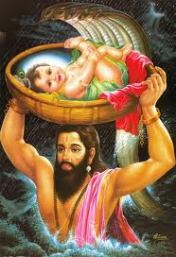

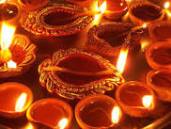
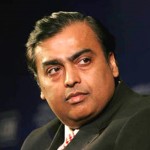

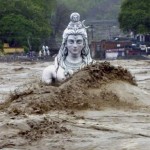
No comments:
Post a Comment